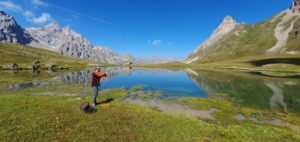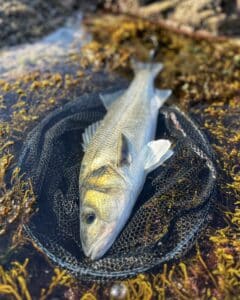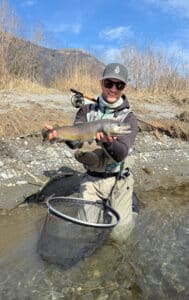This article will not expand on the choice of color of fishing clothing because the topic is too short. But don't deprive yourself of a color of the lure that will make you look good with your best catch.
The subject will therefore focus on the choice of the color of the lure. Many factors influence this color. This is why we are going to give you some keys to help you choose the most suitable color for your fishing situation.
The influence of water on the choice of lure colour
What influences the color of the lure in the water?
Its composition: The clarity of the water only concerns the water itself observed. It is determined by the amount of particles suspended in the water.
Brightness: It depends on the weather: whether the weather is good or ugly. But also the time: in the morning and evening, the light will be lower than during the day.
1) Under daylight with clouds.
2) At sunset.
3) In the dark.
4) Under artificial and UV light.
5) Mix of dawn light, artificial light and UV.
6) UV-illuminated lures in the dark.
We can therefore see that the color of the lures varies greatly depending on the light
Depth: this is the factor that has the most influence on the color of the lure. Depending on the depth chosen, your lure will have a very different color than the original one.

You can see that all the colors are visible in 5m of water, but the more you dive the more the light is attenuated and the warm colors (red, orange, yellow) are much less visible. Unlike green, purple and blue which are visible very deep.
This phenomenon is almost identical in tinted water.
So if you want the fish to see the lure you have to be in the right color range. However, a flashy colored lure in 20m of water is almost invisible (see photo above of the lure).
Temporality
The height of the sun can also influence the choice of colours.
Rising Sun: Bluish, greenish colour.
Sun at its zenith: Transparent color.
Sunset: Orange, golden colour.
For example, water that is a little cloudy can very well be brighter in summer at noon than clear and transparent water on a rainy day and with a dark background. Visibility in the water will be much better in the first case.
The majority of fishermen desert the water's edge long before nightfall, especially in winter. In the same way, many do not arrive at the water's edge until well after sunrise. However, evening or morning shots in the summer season make it possible, in a short time, to make superb catches.
To succeed during these periods of low light, we must follow a few rules and in particular replace our usual lures with dark-colored models. Light or chartreuse colors lose their attractiveness when the light dims, and colors like dark red, dark brown, dark purple, and black gain in appeal. But why? The silhouette of dark lures is most visible in low light. Fish's eyes are equipped with a reflective layer that enhances the remaining light and helps the fish see better in these conditions. It also works with artificial light like street lights.
Colors on a case-by-case basis
Here we have a painting made by Christian from the "Ch'ti-Moucheur" website:
It takes up what we have observed previously by using each color on a case-by-case basis. It will help you make your choice after observing your fishing environment.
Finally, it is important to know that it is possible to combine the colors in order to obtain more attractive streamers.
One of the techniques used is to associate a "dominant" color with another called "stimulating".
I hope you enjoyed the article "The choice of color". For more information, do not hesitate to send us an email in the "contact" section of our field & fish website.
Fishing,
The Field & Fish Team





